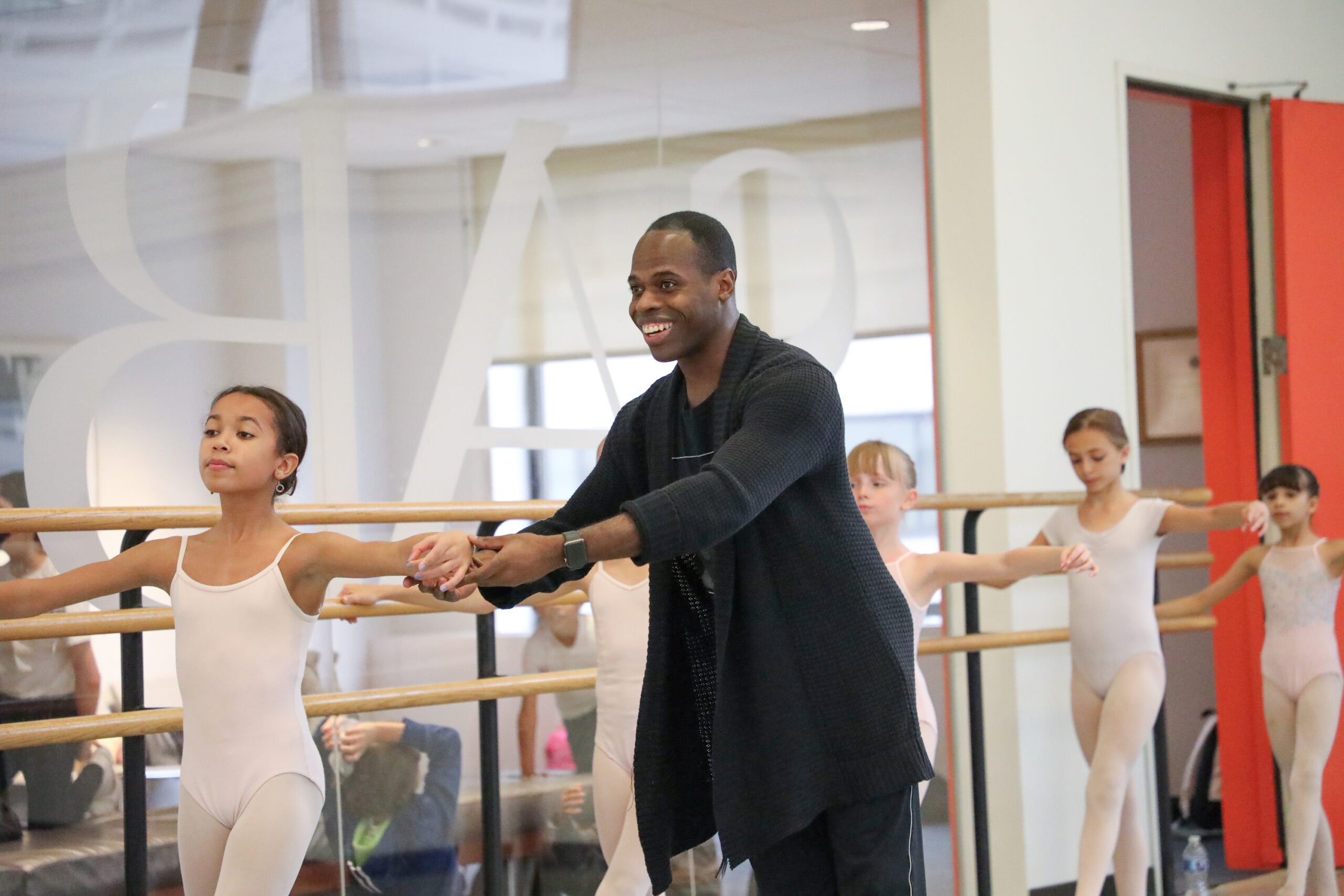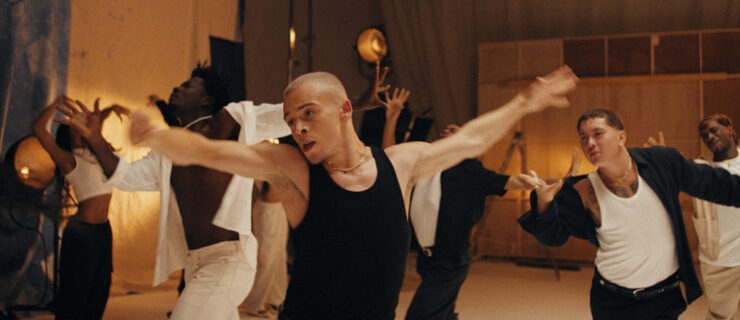Christopher Charles McDaniel Blazes His Own Path at SAB
Christopher Charles McDaniel stands out at the School of American Ballet. The only year-round faculty member who didn’t train at the school or dance for New York City Ballet, he’s the first such hire since 1991. He’s also just the third Black teacher to join the permanent faculty.
From 2021–23, during his final years with Dance Theatre of Harlem, McDaniel was the first non-NYCB dancer to participate in the SAB Teaching Apprentice Program, which provides flexible training and experience throughout the year for possible employment at the school. He had also been part of the 2016–17 class of the National Visiting Fellows, a program that brings teachers with a demonstrated commitment to diversity to the school for two weeks.
“We really got to know Christopher well as a teacher,” says Jonathan Stafford, SAB’s faculty chair and artistic director of New York City Ballet. “He has a real respect for the training approach at SAB and deep appreciation for Mr. Balanchine’s teaching and choreography.”
McDaniel, 33, also trained at Ballet Academy East and danced for Los Angeles Ballet and Ballet San Antonio, in addition to DTH. He usually teaches six to eight classes a week at SAB, from children’s levels to intermediate, and guest teaches, including company class at Alvin Ailey.
McDaniel sat down to discuss his teaching journey, making SAB his home, and diversity in ballet.
Tell us about what drew you to teaching and your early experience.
I started training at age 10 with Mr. Mitchell at DTH, and I saw how he had a way of getting whatever he needed out of a dancer. He knew exactly what to say. I was so fascinated by that, and it drew me to wanting to be in the front of the room. I started teaching at Lula Washington Dance Theatre, and then did the Central Pennsylvania Youth Ballet teacher training that summer, 2013. I was on CPYB’s summer faculty from 2018–22, and I also taught for Ballet Academy East. I’ve taken every opportunity I could to teach, like giving community master classes while on tour with DTH.
What was your exposure to SAB and NYCB as a young dancer?
Growing up at DTH, I thought ballet was for Black people. But then I learned why Mr. Mitchell was famous, and why what he had achieved was so incredible. But I didn’t think those institutions were for me, although I did later audition for SAB twice.

What was your journey to becoming an SAB permanent faculty member?
Participating in the National Visiting Fellows program was eye-opening. Seeing Katrina [Killian, Children’s Program manager who guides the Fellows] on the floor just so carefully shaping a child’s foot, seeing the pedagogical through-line from Level I to the most advanced, and to the company—it gave me so much respect for the organization. I’d also been worried about how welcome I’d feel, but everyone was so nice to me.
I stayed in touch with the school when I returned to New York to rejoin DTH the following year, but I was still shocked when Jon [Stafford] called to offer me the teaching apprentice position. He had asked Virginia [Johnson, then DTH artistic director] for permission first because I’d still be dancing for her. That showed respect for DTH and the character of someone I wanted to work for.
It was good timing that I was ready to retire from DTH when a permanent position opened at SAB. I’d learned so much during my two years as an apprentice, I felt blessed to be able to keep going.
How do you bring your background into your teaching?
I’m very proud of my career and I love sharing it with the students. Growing up a churchgoer taught me that people are moved by your testimony. Mr. Mitchell used to tell stories about his career, including Balanchine. Talking about NYCB will never be what I have to give, but I have another story to tell them. Sharing my experience with DTH and Mr. Mitchell, and other companies, expands their view of what a career can be.
What’s most enjoyable to you about teaching at SAB?
It’s a team effort. We talk to each other about where we are in the syllabus; if the students needed more time on a certain thing and I didn’t get to something else, I can pass that on to the next teacher, and we get the kids there together.
What does the state of diversity efforts in ballet look like to you?
I’m very proud to be Black, but I’ve certainly faced racism in my career outside DTH—just as Mr. Mitchell warned me. So I’m proud to show that programs with diversity in mind are successful and important. If SAB wasn’t living its diversity commitment, I wouldn’t be here. I talk a lot at the school about my ideas for outreach and relating to students with backgrounds like mine. Change can take time, but it’s coming. Look where I am! God is good. The future is bright.




